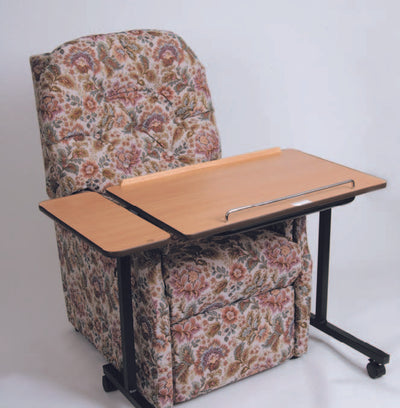There are a huge range of needs to consider when furnishing a care home (or when furnishing a loved one’s room in a new residential care environment). If you’re looking to kit out a new home, or you are refurbishing, you’ll need to consider the types of clients you are caring for and how certain types of furniture will enhance their comfort and safety within the home.
As well as providing good day to day personal care for your patients, it’s also important that you offer a comfortable, homely environment for them to live in. Furnishing your care home with sensitivity and comfort will offer dignity and a sense of ‘home’ to your clients and their families, as well as offering the essential care support needed by your staff. .
So What Care Home Furniture Do I Need?
For Care homes specializing in Dementia care you will need to focus on dementia-friendly furniture that has rounded edges and no sharp corners in order to prevent your patients causing any undue harm to themselves.
For other care environments here are a few essential items to kit out your care home with:
Seating:
In your lounge areas as well as in the individual bedrooms you will need some comfortable chairs for patients. Offering lounge chairs with good posture support will give elderly patients a comfortable seat that supports their lumbar.
Height adjustable chairs with back support and arms can be useful for patients who might need a little extra head support as well. The chairs are wipe clean, and the adjustable legs can be fitted to suit an individual user if, perhaps, it’s used in their room.
Some patients may require chairs that recline and also move forwards, in order to assist them in getting in and out easily.
Patients might like to bring a more luxurious and comfortable rise and recline chair from home to their care home room.
Beds:
Beds will vary throughout the rooms from standard single divan or framed style (which might also be brought in by the patient themselves) to a profiling bed with adjustable sections for easier patient care, movement and to reduce the effects of immobility. Paired with a pressure relief mattress or a pressure redistribution mattress these will provide the patient a comfortable, and supported sleep, while making handling and moving the patient considerably easier for the care team.
Pressure relief mattresses are also a good idea for those with limited mobility, or who are bed bound.
Tables:
As well as dining tables and occasional tables throughout the home, personal tables such as over bed tables and trays can be much more useful for patients who might struggle with mobility issues to reach out from their seated position. An over chair table gives the less mobile patient the opportunity to independently eat, drink, read or do puzzles etc while remaining supported and seated. Overchair tables can be wheeled around and be used by a number of different patients at different times, and an adjustable overchair table can be raised and lowered in height as well as reversed for left or right-handed use.
Similarly, an overbed table will offer the chair or bed-bound patient an opportunity to engage with activities or to eat and drink more comfortably. Many overbed tables can be adjusted in height as well as in tilt, angling the table and its contents towards the patient for easier reach and visibility.
Patient Handling Equipment:
Moving patients who are much less able or mobile from chair to bed and elsewhere will be a daily occurrence in most care homes. Provide the right equipment and support for your care team with this patient handling equipment items.
A heavy duty Pullman patient handling helper to assist the patient in finding a comfortable position in bed.
One of the most popular and cost effective pieces of patient handling equipment is the MEDesign Patient Handling Sling which can be used in almost every nursing and caring situation to help prevent back injuries to nurses and carers. The sling lengthens the reach of the carer, allows them to find a better grip and makes it easier to work in an upright position.
For patients who are only partially dependent and have limited weight bearing abilities, transfers from chair to chair, chair to bed or chair to vehicle can be done using a gait belt or transfer belt. A multi-handled transfer belt provides several loops or handles which can be used as additional guidance and support to help the patient move from one position to another. Gait belts or transfer belts are very effective in lessening the possibilities of back injuries for the carer and of falls during transfer of the patient.
May 2023





































